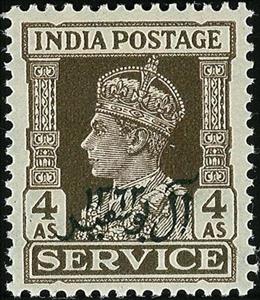Stamp: Bicentenary Service (Oman 1944)
Bicentenary Service (Oman 1944)
20 November (Oman ) within release Al Bu-Said Dynasty goes into circulation Stamp Bicentenary Service face value 4 Indian anna
| Stamp Bicentenary Service in catalogues | |
|---|---|
| Michel: | Mi:OM D8 |
Stamp is square format.
Overprinted in ArabicAlso in the issue Al Bu-Said Dynasty:
- Stamp - Bicentennary Service face value 3;
- Stamp - Bicentenary Service face value ½;
- Stamp - Bicentennary Service face value 9;
- Stamp - Bicentenary Service face value 1;
- Stamp - Bicentenary Service face value 1½;
- Stamp - Bicentenary Service face value 2;
- Stamp - Bicentenary Service face value 2½;
- Stamp - Bicentenary Service face value 4;
- Stamp - Bicentenary Service face value 8;
- Stamp - Bicentenary Service face value 1;
- Stamp - Commemoration of Bicentenary face value 3;
- Stamp - Commemoration of Bicentenary face value ½;
- Stamp - Commemoration of Bicentenary face value 9;
- Stamp - Commemoration of Bicentenary face value 1;
- Stamp - Commemoration of Bicentenary face value 1½;
- Stamp - Commemoration of Bicentenary face value 2;
- Stamp - Commemoration of Bicentenary face value 3;
- Stamp - Commemoration of Bicentenary face value 3½;
- Stamp - Commemoration of Bicentenary face value 4;
- Stamp - Commemoration of Bicentenary face value 6;
- Stamp - Commemoration of Bicentenary face value 8;
- Stamp - Commemoration of Bicentenary face value 12;
- Stamp - Commemoration of Bicentenary face value 14;
|
Data entry completed
60%
|
|
|---|---|
| Stamp Bicentenary Service in digits | |
| Country: | Oman |
| Date: | 1944-11-20 |
| Print: | Typography |
| Perforation: | comb 14 |
| Emission: | Commemorative |
| Format: | Stamp |
| Face Value: | 4 Indian anna |
Stamp Bicentenary Service it reflects the thematic directions:
Commemorations are a type of religious observance in the many Churches of the Anglican Communion, including the Church of England. They are the least significant type of observance, the others being Principal Feasts, Principal Holy Days, Festivals, and Lesser Festivals. Whereas Principal Feasts must be celebrated, it is not obligatory to observe Commemorations. They are always attached to a calendar date, and are not observed if they fall on a Sunday, in Holy Week, or in Easter Week. In Common Worship Commemorations are not provided with collects or indications of liturgical colour. However, they may be celebrated as Lesser Festivals if local pastoral conditions suggest it.
King is the title given to a male monarch in a variety of contexts. The female equivalent is queen regnant (while the title of queen on its own usually refers to the consort of a king). In the context of prehistory, antiquity and contemporary indigenous peoples, the title may refer to tribal kingship. Germanic kingship is cognate with Indo-European traditions of tribal rulership (c.f. Indic rājan, Gothic reiks, and Old Irish rí, etc.) In the context of classical antiquity, king may translate Latin rex or either Greek archon or basileus. In classical European feudalism, the title of king as the ruler of a kingdom is understood as the highest rank in the feudal order, potentially subject, at least nominally, only to an emperor (harking back to the client kings of the Roman Empire). In a modern context, the title may refer to the ruler of one of a number of modern monarchies (either absolute or constitutional). The title of king is used alongside other titles for monarchs, in the West prince, emperor, archduke, duke or grand duke, in the Middle East sultan or emir; etc. Kings, like other royalty, tend to wear purple because purple was an expensive color to wear in the past.


